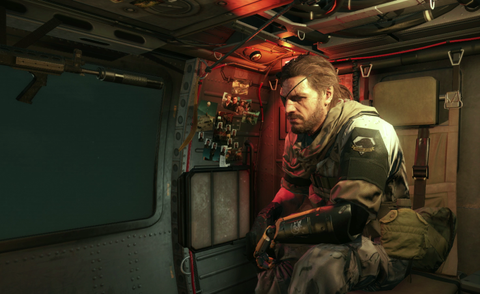I own every single game. I bought a GameCube just to relive MGS1 with its Twin Snakes re-master. I bought a PSP just for Peace Walker. I bought a PS3 just for Metal Gear Solid 4. It's with a heavy heart that I review Metal Gear Solid V: The Phantom Pain, knowing that it's the last with Hideo Kojima at the helm.

Hideo Kojima is the very DNA of Metal Gear, having worked on the franchise for 28 years. Metal Gear Solid V: The Phantom Pain serves as Kojima's final foray with the franchise. If Konami's treatment of Silent Hill is any indication, Metal Gear faces a bleak future without its original creator. I invite Konami to prove me wrong, but many fans, myself included, are expecting MGSV: TPP to be the last Metal Gear Solid that matters.
Many outlets are reporting that Metal Gear Solid V: The Phantom Pain is a masterpiece, and initially, it was hard to dispute that assessment. After fully completing it, though, I don't think MGSV will be remembered as fondly as other games in the series.
Setting
What is Metal Gear Solid V: The Phantom Pain?
Metal Gear Solid V: The Phantom Pain is the final installment of the Metal Gear Solid saga. The franchise spans 28 years, each written and directed by Hideo Kojima. Metal Gear Solid 1 and 2 took place in modern times, following the exploits of the code-named Solid Snake - a protégé of the legendary soldier known as Big Boss. Metal Gear Solid 3 begun to tell his origin story, taking the series back to the Cold War. Back then, he also operated by the code-name of Snake for the United States military.
MGSV: TPP should also set the stage for the events of the classic games
Big Boss' story continued with Metal Gear Solid: Peace Walker on the PSP. Metal Gear Solid V: The Phantom Pain serves to bridge the gap between Big Boss' story arc and Solid Snake's, begun with Metal Gear 1 and Metal Gear 2 on the DOS based MSX.
In Metal Gear 2, Solid Snake defeats Big Boss once and for all at the behest of the US. It seems as though The Phantom Pain tells the story of how Big Boss' nuclear-powered rogue state came to be. Indeed, a significant part of the game is managing the development of Big Boss' base.
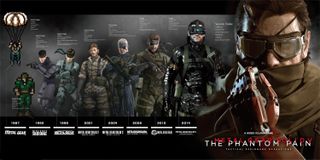
For fans of the series, Metal Gear Solid V: The Phantom Pain should explain Big Boss' descent into the ruthless warrior Solid Snake battles in those early titles. MGSV: TPP should also set the stage for the events of the classic games, and even MGS1, 2 and 4, completing one of the industry's longest-running video game sagas.
This is Metal Gear Solid's last gasp. As a reviewer, I knew from just a few hours play that MGSV is a solid and rewarding open-world stealth 'em up, fully able to keep gamers busy for weeks. As a fan, I installed the disc with nothing short of trepidation. Will MGSV provide a bittersweet, but satisfying end to the saga? Or will it leave a chronic phantom pain of missed opportunities?

For information on the events preceding and following MGSV: TPP, I always refer to Metal Gear Timeline. (The link contains spoilers for previous Metal Gear titles.)
On Tech
Graphics, audio, systems and the FOX Engine
Metal Gear Solid V: The Phantom Pain is a feast for the mind, proving the clout of Kojima's FOX Engine. The game's open world areas are impressively vast. I was worried that the switch to open-world settings would dilute Kojima Productions' attention to detail, but it's mostly not the case. I'll discuss the setting more in the gameplay section.
The major locations are designed with meticulous deliberation, offering a sense of freedom when it comes to tackling the game's missions. Sneak into crawl spaces, scale fences, infiltrate with your lock picking tools, snipe enemies from afar, or rush in guns blazing with an LMG. It feels as though these portions are designed to invite creativity. To compliment it's open-world nature, the game has an incredible draw distance without impacting performance.
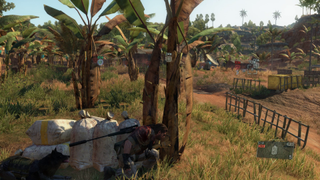
The major locations are designed with meticulous deliberation, offering a sense of freedom
MGSV: TPP features incredible sound treatment, and I'm happy to report it carries the signature Kojima-feel. Menu items hum out with those familiar PS1 sounds and guards enter alert status with that iconic alarm tone. There's an air of modernization, for better or worse. Headshots ring with an almost comical crunch, but it adds some satisfying emphasis.
MGSV takes place in the mid-80s and to compliment that fact, it features a wide array of licensed retro music. The cassettes can be found throughout the game, looted from old-school tape players. The licensed music isn't used a great deal in the game's cinematics generally, but Midge Ure's version of "Man Who Sold The World" serves as the game's introduction to powerful effect. MGSV uses an original score from composers who worked on previous titles, and it's every bit as moving - suitably darker than previous games.
In technical terms, MGSV: TPP runs at 900p and 60 frames per second on the Xbox One. Personally, I usually prefer 30 frames per second for story driven games but the demand for quick reflexes and precise shooting in MGSV makes the smoother frame rate more than welcome. I suspect a combination of cross-platform development and targeting 60 frames per second prevent the game from looking as rich as a dedicated current gen game like The Witcher 3. However, MGSV delivers in the important areas - for the most part.

I've experienced an odd glitch where the game lags out, and Snake proceeds to wander uncontrollably based on the last controller input for 1-3 seconds. It might not seem like a big issue, but more than once it's hindered my assassination attempts or messed up a boss fight. There's also a notorious bug that causes save file corruption in certain circumstances. Konami issued warnings of the bugs in-game, along with promises of a fix.
On Gameplay
Gear galore, micro-management, stealth perfected
Metal Gear Solid V: The Phantom Pain is probably the best in the series when it comes to pure gameplay. There are hints of each game in the series in MGSV: TPP, refined and condensed into the ultimate tactical stealth game. Player freedom typifies open-world games, and Metal Gear Solid V: The Phantom Pain takes this concept and runs with it, soars the skies with it, literally.
In typical Metal Gear fashion, there are dozens upon dozens of guns, gadgets and gizmos that you're able to deploy in battle. I think it's safe to say that MGSV: TPP has more weaponry than any other Metal Gear, giving you complete control over how to play. Many equipment items also feature unique systems and customizations on top. Indeed, you might not find the time to use every feature the game has on offer.
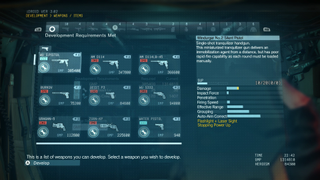
Cardboard boxes return, but can now be stood upright with a poster attached to confuse enemies, often with hilarious consequences. You can also use the cardboard box to slide down hills - the tactical advantage of this is unclear, however. The cardboard box in MGSV: TPP embodies Kojima's penchant to include tons and tons of small features that other studios likely wouldn't bother to include.
Level up your bond-level with your horse, and you can command it to defecate on the road - causing vehicles to skid and crash. Request chopper gunner support, aerial bombardment, and even weather modification. Speaking of the chopper, you can request supply drops - and if you target them correctly, you can drop them right on top of your foes' heads.
Indeed, you might not find the time to use every feature the game has on offer
There are probably hundreds of ways to use the tools at your disposal, far too many features to list here. Part of the joy of MGSV: TPP's dynamic world is figuring out ways to combine seemingly innocuous (sometimes wacky) mechanics to aid your victory. The dynamism in combat and infiltration certainly helps prop up areas of the game that aren't so great.
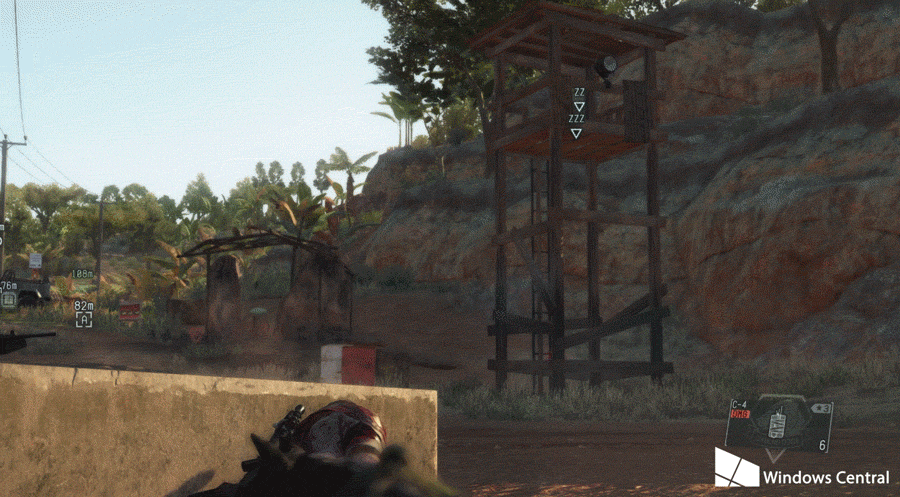
MGSV: TPP takes place in two huge open world areas. One is Afghanistan, a sun-drenched mountain region broken up with winding ravines. The other is Africa, a flatter, wetter area dotted with brief instances of the jungle. The open-world areas between facilities are quite barren. I recalled the battle taking place between AI soldiers in MGS4 as I played, yet these war-torn MGSV areas see very little NPC interaction.
The guard outposts used in most objectives are well designed - but become familiar very quickly. Some missions will take you to a localized facility with more complex features and infiltration paths, but these moments are few.
I doubt any location in MGSV will provide the same shock of nostalgia that MGS1's Shadow Moses or MGS3's Tselinoyarsk forests do in 10 years time. MGSV's areas, as vast as they are, could've benefitted from more variation, more character.


With that in mind, this could've easily been the most repetitive Metal Gear in the saga. At the lowest level, the game's missions pertain to assassinations, prisoner extractions, and sabotage. Other open-world games tend to fall into a trap of cookie-cutter mission objectives, but MGSV always throws surprises to keep the main objectives becoming too repetitive. Additionally, Metal Gear keeps you entertained in areas beyond its vast open world.
Metal Gear Solid V retains Kojima's signature subversive plot; the intrigue helps drive you forward. When things get too repetitive, you can change up how you approach missions. Each mission features side-objectives too; MGSV is a completionist's paradise. In addition to the vast array of tools at your disposal, you can also take "buddies" on missions that serve different combat roles. D-Dog barks when he detects enemies, and can lunge and bite an enemy allowing you to grab them without entering alert status. The D-Walker buddy is like a miniature Metal Gear that can be upgraded and customized, right down to the paint job.
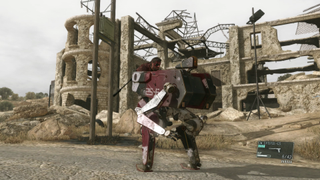
You get rewarded with ranks for completing each objective with finesse. Naturally, stealth playthroughs grant the higher ranks, but it doesn't punish you too harshly for playing a noisy sniper or violent mech-gunner, providing you complete objectives swiftly. Achieving those higher ranks is every bit as satisfying as playing the previous Metal Gears on a higher difficulty.
MGSV features another gameplay system that helps break up the intense espionage. Like MGS: Peace Walker, completing objectives accrues currency you can spend developing your equipment and home base. Eventually, you can build all sorts of gear - but also facilities for Mother Base. Unlike Peace Walker, you can physically visit Mother Base and indeed, some missions even take place there. I found myself addicted to developing and maintaining Big Boss' private army, extracting soldiers from the field and sending them out on missions, Fallout Shelter-style.


There's easily 60+ hours of gameplay in MGSV: The Phantom Pain, even if a significant amount features copy-pasted side-missions. Achievement hunters will be enjoying well over 100 hours. You can extend the play time even further if you get sucked into the online PVP system, which has you setting up a separate Mother Base that players can invade and vice versa. Using this system, you can develop security devices and a separate staff to defend your base. You can stimulate the rate of online base creation with pricey micro-transactions. Thankfully, the system is entirely optional.
MGSV is rock solid on paper, particularly at first glance. The gunplay, combat and sense of freedom make for the strongest in the series. There's so much to discover in its core systems, even if the open-world itself feels a little barren in the wake of GTAV and The Witcher 3.
I was prepared to join those 10/10 review scores with around 35 hours playtime. Sadly, I found the latter portion of the game bitterly disappointing.
On Story
Sprinting out of the gate, crawling towards the finishing line
Warning: There aren't plot spoilers here, but I'll be critiquing the way the story is structured and referencing plot elements from previous Metal Gear titles.
I've left this part until last because one of Metal Gear Solid biggest draws is its (often divisive) plot. In my impressions piece, I noted that Kiefer Sutherland didn't have many lines, making Big Boss uncharacteristically quiet. This guy is supposed to be the leader of an entire army, eventually an entire nation. So then why does he seem so uncharismatic? I theorized that Sutherland's Hollywood inclusion may have eaten into the game's budget, and his lines were kept thin to keep costs down. It's hard to know if this is true.

The cycle of revenge is a major theme in the game, and Sutherland adequately portrays a Big Boss worn down by the trials of war
I warmed to Sutherland's performance as the game went on; there're plenty of reasons to explain Big Boss' change of personality written into the plot. The phantoms from the events leading up to MGSV haunt him. Chico and Paz's capture in Ground Zeroes, Mother Base's destruction, Zero's mania. The cycle of revenge is a major theme in the game, and Sutherland adequately portrays a Big Boss worn down by the trials of war.
Big Boss gets accompanied by an array of engaging characters. Kojima largely resists the urge to go overboard on nostalgia hits with returning characters, for better or worse. I felt like Skull Face was right up there with franchise's biggest, most sadistic evils.
Like Peace Walker, MGSV has a mission based structure. Certain missions will trigger cut-scenes and further the plot while others offer rudimentary voice chatter and audio cassette discussions for context. It certainly feels like MGSV: TPP is thin on cinematics at times, offering major plot points as part of a cassette tape instead of a choreographed scene. It's very easy to imagine how some of the cassettes would be better suited as a cut-scene, making me wonder, again, if business constraints led to these design decisions.

Following an incredible introduction sequence, the pacing of the game's story works well - up to a point. Then, suddenly, it's almost as if the game marks the moment Konami pulled the plug and gave Kojima Productions a hard deadline. The final 8-15 hours of the game are a disjointed, rushed-out mess.
It's almost as if the game marks the moment Konami pulled the plug and gave Kojima Productions a hard deadline
Up to that point, you progress through the game's areas, taking on fresh infiltration locations as you go. For the game's final 15 or so hours, you're sent back to locations you've already been to, washed over with slightly different enemies and objectives. I've seen other games get utterly panned for re-using areas over and over for main missions. For MGSV to escape this criticism irks me.
Ultimately, it feels as though Kojima Productions ended up spreading the game's story across an insufficient amount of playable locations.


Up until that point (and you'll know when it is), the game provides maybe one or two cassette tapes that serve in support of cinematic cut-scenes. In the final portion of the game, missions begin offering major plot points as part of cassettes, in lieu of cinematics. The missions themselves have very loose context, one will take you to Africa, another back to Afghanistan, inexplicably re-using facilities that had previously gotten cleared. These missions play like filler, purely intended to rescue snippets of the plot from the cutting room floor.
As you get further towards the end, the progression path becomes blurry. You may eventually find yourself without new missions. Instead, you'll be forced to limp through missed side missions or repeatable main missions with modifiers, hoping that one of them drags you from the open-world for the next plot point.
When you disregard its poor delivery towards the end, the story overall is grand, challenging, and genuinely satisfying. MGSV is indeed the tale of how Big Boss became the 2D sprite you defeat in Metal Gear 1 on the MSX. It's just painful to think how much better it could have been. MGSV was the last chance to explain some of the franchise's biggest questions.
It's just painful to think how much better it could have been
I can't envisage that Kojima intended the series' final moments to play out as a result of repeated missions and cassette tapes, when you consider how meticulously crafted the progression is in other Metal Gear games. Indeed, up until the final dozen or so hours, it felt well executed.
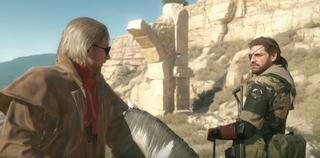
Without spoilers, MGSV does finish strongly, despite leaving a couple of plot holes in it's unfinished wake. It just seems clear that the drama between Konami and Kojima has impacted the game. If the reports are true, then it's impressive that Kojima Productions were able to salvage a vaguely coherent story within whatever limits got imposed.
Conclusion
MGSV represents an unrealised masterpiece
Expectations for MGSV were astronomical, and Kojima clearly intended to meet them head-on. MGSV's combat and systems are the culmination of every other title in the series, condensed and refined. The open-world areas are impossibly huge - but could've used more variation. Regardless, every successful infiltration is every drop as satisfying in MGSV as it is in MGS1, 2 or 3.
The sticking point is this: something could've been done to finish this game properly
I began to feel disappointed in the latter portion of the game, due to re-used areas and reliance on audio files to tell major plot points. It seems plausible that it got done as a time-saving measure. It's an unfortunate reality that game creation ties in so closely with the business aspects. It's easy, as a fan, to lay blame at the faceless Konami Corp for not allowing Kojima to finish the game properly. The truth is we simply don't have the full picture. For publishers, gaming is a business first. Occasionally time and money become too much of an issue, perhaps Kojima was overbearing with ambition. Indeed, since writing this review, data miners unearthed the absence of a planned third chapter, as well as missing cut scenes and other story elements.
Regardless of where the blame lies, the sticking point is this: something could've been done to finish this game properly. They could've split the game into chunks like they did with MGSV: Ground Zeroes. They could've included a season pass to finish off those incomplete elements as DLC. As unpopular as those decisions would be, I think they'd be preferable in this case.
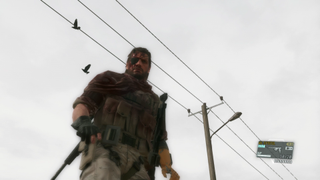
Kojima, for better or worse, seems to be someone who gets deeply involved in the details. Were it possible or even plausible, I would've happily sacrificed some of the equipment bulk, Mother Base features or even the open-world for a fully fleshed out narrative. That's my personal preference, though. MGS4 got derided for having too many cinematics after all - you may rightly feel the same way.
Re-used locations and congested story aside, MGSV finishes on a strong note, packing dozens of hours of joy up until that woeful final chapter. It may be a long time before a franchise comes along that can consistently impress for 28 years in a single story arc.
Pros:
- Top class stealth gameplay
- Dizzying amount of gameplay features
- All things considered, MGSV is an incredible accomplishment
Cons:
- Padded with filler and re-used areas
- Story delivery in the final third of the game is weak
- The strife between Konami and Kojima clearly impacted the game's execution
MGSV is certainly not perfect by any measure, but it is a great video game. Sadly however, I don't think it's a great Metal Gear Solid. Wherever the blame may lie, "The Phantom Pain" subtitle has become a metaphor for the game's missing elements.

Jez Corden is a Managing Editor at Windows Central, focusing primarily on all things Xbox and gaming. Jez is known for breaking exclusive news and analysis as relates to the Microsoft ecosystem while being powered by tea. Follow on Twitter @JezCorden and listen to his XB2 Podcast, all about, you guessed it, Xbox!
